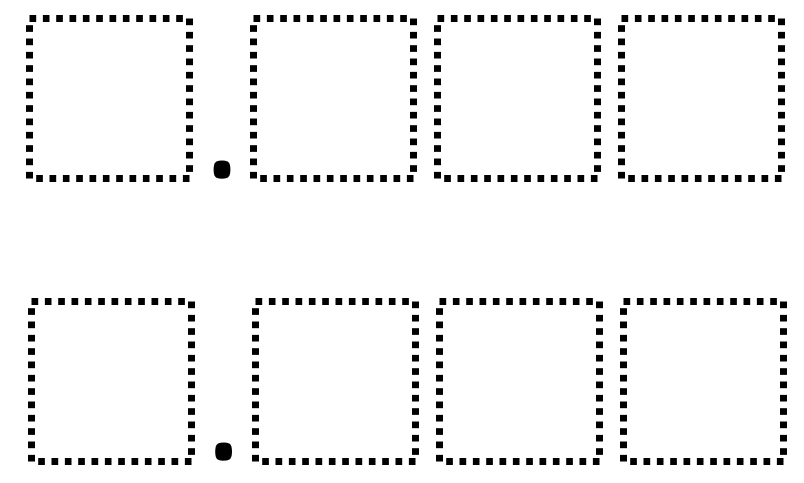Directions: Using the digits 0 to 9 at most one time each, place a digit in each box to create two different decimals that are equivalent when rounded to the nearest tenth and have the least possible value.

Hint
How can you have values that are equivalent when rounded to the nearest tenth yet have different whole number values?
Answer
There are many possible answers which all round to 2.0 including 1.978 and 2.043.
Source: Robert Kaplinsky
 Open Middle®
Open Middle®

Shouldn’t the directions say “round to the nearest whole number” if the example you gave rounds both to 2?
I was wondering this. If I can use 0, why can’t I round to 1? 0.637 and 1.524
The directions say “when rounded to the nearest tenth”.
Yes, 0.637 and 1.524 are smaller than 1.978 and and 2.043, but they are not equivalent when rounded to the nearest tenth, so they don’t fulfill the requirements of the task.
In order for the two numbers to be equivalent when rounded to the nearest tenth, they can’t be more than 0.1 apart, because each number is rounded up/down at most 0.05 when rounded to the nearest tenth.
And your two numbers have to have different whole parts. Which means they must both be very close to a whole number.
If you wanted both of them to round to 1, then the larger one has to be less than 1.05 and the smaller one has to be greater than 0.95. But both of them contain the digit 0 (which can only be used once).
So instead, they both have to round to 2, with the larger one being less than 2.05 and the smaller one being greater than 1.95.
1.968 and 2.075 (5th grade class in NJ)
If the decimal numbers have to have the least possible value, should there not just be one ansswer instead of multiple ones?
Would 1.956 and 2.034 be the least possible values that round to 2.0?
Just kidding…. that should say 1.968 and 2.035
we really liked the challenge
1.986 and 2.034 both round to 2.0
yes…but when rounded to the nearest tenth they both are 2.0. Good discussion point!
0.356
1.427
We found that 1.956 and 2.043 both round to 2.0 🙂
There are 648 possibilities (plus another 648 if you swap the two) to fill in the digits such that both numbers round to the same number when rounded to the nearest tenth.
The one where the sum of the two numbers is smallest is 1.954 and 2.036, with a sum of 3.990, both rounding to 2.0.
The one where the sum of the two numbers is greatest is 8.045 and 2.034, with a sum of 16.008, both rounding to 8.0.
The one with the smallest number involved is 1.953 and 2.046, with a sum of 3.999, both rounding to 2.0.
The one with the greatest number involved is 8.046 and 7.953, with a sum of 15.999, both rounding to 8.0.
The directions say “when rounded to the nearest tenth”.
Yes, 0.637 and 1.524 are smaller than 1.978 and and 2.043, but they are not equivalent when rounded to the nearest tenth, so they don’t fulfill the requirements of the task.
In order for the two numbers to be equivalent when rounded to the nearest tenth, they can’t be more than 0.1 apart, because each number is rounded up/down at most 0.05 when rounded to the nearest tenth.
And your two numbers have to have different whole parts. Which means they must both be very close to a whole number.
If you wanted both of them to round to 1, then the larger one has to be less than 1.05 and the smaller one has to be greater than 0.95. But both of them contain the digit 0 (which can only be used once).
So instead, they both have to round to 2, with the larger one being less than 2.05 and the smaller one being greater than 1.95.
We got: 0.001 and 0.002 both rounded would be 0.000
You can only use 0’s 1 time.
0.987
1.234